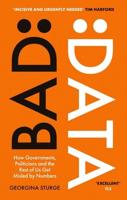Publisher's Synopsis
Inhaltsangabe: Abstract: The aim of this study is to show to what extent cultures of memory are important parts of the content of football fanzines and how they are exercised. It will also be discussed why these cultures of memory are an important part in the fanzines and for the people involved in the production of fanzines. The literature review in chapter one highlights the strength and weaknesses of written accounts on football fanzines and also examines concepts of memory that deliver an explanation for the use of cultures of memory in football fanzines. These include theories by Maurice Halbwachs who is acknowledged as the founding father of the field of collective memory. Pierre Nora takes this idea and adapts it to the collective memory of a nation, here France. Aby Warburg investigated how in Western European countries a pictorial memory has been developed over the course of the last 500 years through which pictures and images from the ancient past are recycled. The sociological perspectives that will be presented here are used to give possible explanations about why there are cultures of memory in the content of football fanzines. Norbert Elias work on established and outsider relationships will be used to explain why football fans separate themselves from ordinary spectators in football stadia. He further looked at power relationships in this context. Also, the idea of a civilizing process is looked at and explained if such a thing had taken place among football fans to become producers and editors of football fanzines. Throughout the work the history of football fanzines will be highlighted. This has partially been done by some writers mentioned in the literature review. These accounts examine the history of the fanzines until the mid-1990s. English football saw massive changes in the 1990s in the wake of the Taylor Report (1990) and with the introduction of the Premier League in 1992. Therefore the fanzines not only offered a platform for discussion










